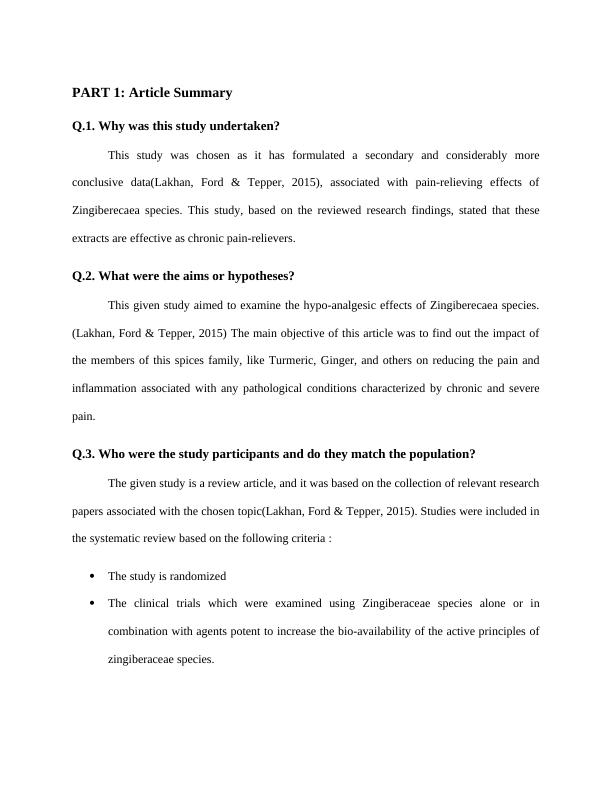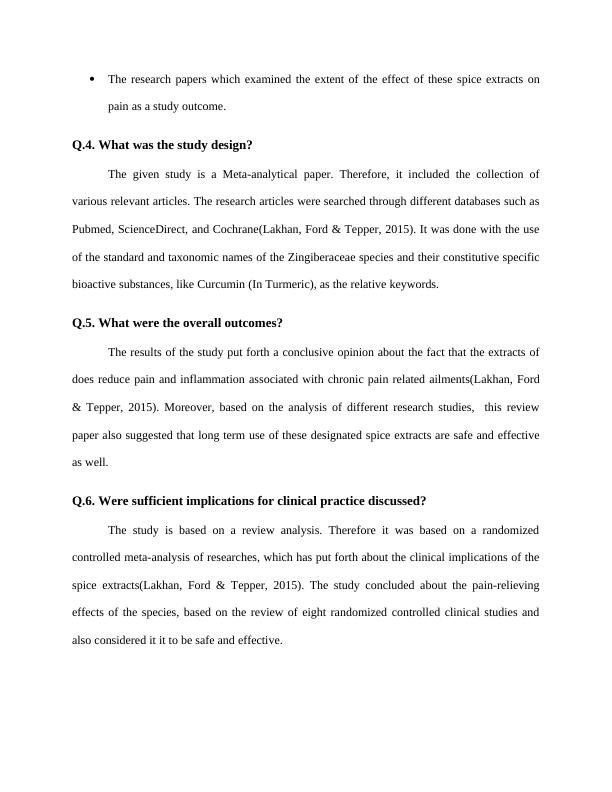Pain Relieving Effects of Zingiberecaea Species
This assessment advances students understanding of the main components of good quality research evidence and provides students with an opportunity to demonstrate their ability to locate a research article in healthcare.
6 Pages848 Words17 Views
Added on 2022-08-26
Pain Relieving Effects of Zingiberecaea Species
This assessment advances students understanding of the main components of good quality research evidence and provides students with an opportunity to demonstrate their ability to locate a research article in healthcare.
Added on 2022-08-26
ShareRelated Documents
End of preview
Want to access all the pages? Upload your documents or become a member.
Assessment on Journal Article Evaluation Using a Critical Appraisal Tool
|15
|3081
|53
700064FREBP Different Research Methodologies
|8
|1145
|36
Concept of Aromatherapy | Report
|9
|2075
|12
META-ANALYSIS IN RESEARCH.
|3
|417
|73
Assignment on Experimentation Exposure Proposal
|6
|1273
|31
Honey Dressing for Wound Healing in Diabetic Patients: A PICO(t) Analysis
|23
|2202
|374



